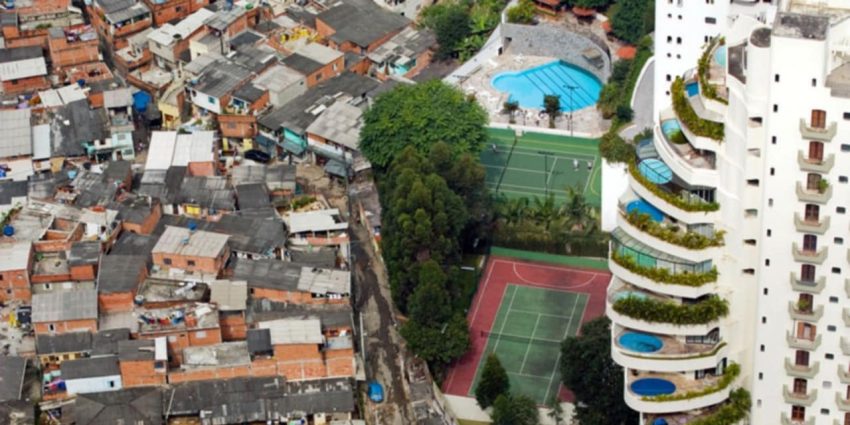by Nat Winn
The BRICS alliance has been welcomed by some progressive people as a counterweight to United States and Western dominated global hegemony. It is reasoned by some that a multi-polar world creates a more favorable balance of forces for radical and revolutionary politics to operate in and take hold. Others have promoted an alliance of the global South against the hegemonic Western dominated G7 alliance.
Sometimes it seems like these positions are developed based on sheer hopefulness without regard to the stated motives of the BRICS member nations or their actual actions in the real world. It is also seldom asked how the ascendancy of some nations in the global South would affect the lives of the majority of people living in those nations. In other words, how would inequality, poverty, and the relations of the people to ownership over national technology and knowledge change in a world dominated by the BRICS alliance? How would global poverty and inequality be affected?
If the BRICS alliance nations are interested in developing an alternative to the current world system, it is very hard to tell by their actions, even as diverse and uncoordinated as those have been. This is partly evidenced by the participation of six BRICS nations in the G20 Summit, a meeting of the 20 wealthiest nations in the world to discuss the terms of global governance and trade.
The 2024 G20 Summit itself was mainly inconsequential, however, the fact is that the major Western powers and Japan are not confronted at global ruling class meetings; the BRICS nations are not positing a new economic structure or any challenge to the global order, indicate that they each mainly want their seat at the table of the wealthy, to partake in the parasitic capitalist game. Nor is there any other space where the BRICS alliance or any single nation within the BRICS alliance has challenged global capitalism and pushed for anything remotely progressive.
It is also necessary to look at who gets into the BRICS alliance and who doesn’t. For example, in January 2025, Indonesia became the 10th member of the BRICS alliance. This is in spite of the fact that their elected President is a United States trained military despot responsible for massacres in East Timor and the murder and disappearances of pro-democracy activists.
Both Iran and India are led by religious nationalist parties and have repressed religious minorities in their countries. The irony is that one is very friendly with the U.S. and Trump and thus stands in the way of the de-dollarization of global currency that so many progressives are excited about and the other is considered a state sponsor of terror by the U.S. These two regimes seemingly at odds in regards to global relations co-exist in the same BRICS alliance. This is a fact worth considering when thinking about the coherency of this alliance and whether it has a legitimate vision.
The BRICS alliance have also attempted to bring Saudi Arabia into its group, despite its deplorable human rights record. Most of the BRICS nations have commercial relations with Israel, even if some, like South Africa have spoken out against the apartheid system there and the genocidal war that Israel has carried out against the Palestinians.
In the meantime countries such as Algeria and Venezuela have not been invited to join the BRICS for reasons seemingly having to do with poor relations to Western hegemons or allies of the U.S./NATO/G7 alliance. While this may seem contradictory, it makes sense if it is possible to look at the BRICS as a bloc where regional powers can play one major bloc off against the other, while maneuvering for their own place at the table within the global order.
Even while some countries are included and others left out, the overall growth of the BRICS into 10 member nations and 8 supporting nations has in some ways created a more loose alliance and a lesser basis of unity within the bloc. The BRICS seem like a hodgepodge of nations each with their own agendas and motives and lacking a clear vision of the future. Their main unifying tendency seems to be to want to mitigate the global power of the United States and Western European dominated alliance. As such they are not looking to dismantle the U.S. empire so much as to claim a seat at the global capitalist table.
It is worth pointing out as Patrick Bond bluntly does that the BRICS nations if not as powerful (yet) as the West, do have some things in common with the global hegemons:
“the imperialist West and subimperial BRICS have in common: wars, violations of sovereignty, worsening inequality, poverty, exploitation, unemployment, pandemic mismanagement, looting of poor countries’ resources, extreme contributions to climate change and ecocide, violence against women, abusive high technology, censorship, surveillance, austerity, neoliberalism, false ‘de-dollarisation’, human rights abuses, LGBTQI+ repression, venal corruption and tyrannies.”
It is unclear whether the individual national ambitions of each nation will pull the alliance apart, but as it stands, the BRICS can be defined as an amorphous alliance without any real clarity of vision, and while they may reflect a counterweight to U.S. unipolarity, they do not represent a threat to the global capitalist system as a whole.


An important reminder that we live in a world where corporations don’t have borders, and nationalism is an obsolete lens to view the world through.